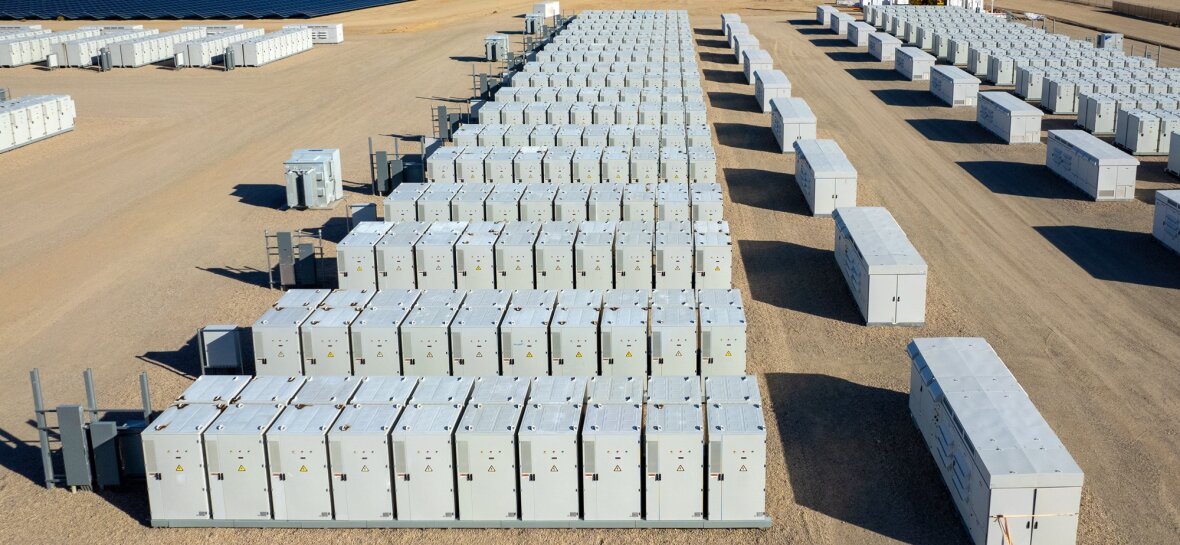Lowering TCO and Reducing Deployment Risks in Battery Energy Storage Applications

As governments and organizations around the world look to increase adoption of renewable energy to meet their 2030 climate goals1, the market for battery energy storage systems (BESS)2 is rapidly growing. In Europe and the US, this has been driven by landmark legislations; the REPowerEU plan3 and the Inflation Reduction Act4, respectively, which have directly assigned funding for renewable energy projects. Meanwhile China has been rapidly investing in similar projects at scale to accommodate its own energy transition. Part of the renewable energy equation is energy storage, and battery energy storage systems are a key enabler.
For typical BESS applications the total cost of ownership (TCO) includes upfront costs like manufacturing, shipping and installing the batteries, as well as long-term operation factors such as reliability, which impacts operational uptime, safety, insurance, and maintenance costs.
From residential to grid-scale projects, ultimately each one must begin at the micro scale – the humble battery cell5. By improving the monitoring, performance and safety at the cell-level, the advantages cascade into all parts of the larger project for the entirety of the system’s lifetime.
Let’s discover the advantages of Dukosi Cell Monitoring System (DKCMS™)6 at each stage from cell manufacturing, through to battery pack creation7, through deployment, in operation, and even sustainability aspects when it reaches end-of-life:
Cell manufacturing quality control
In a recently published report by CEA Insights on BESS Quality Risks8, 30% of defects were attributed to the cells. More effective earlier identification of bad cells reduces the chance of using them in battery packs. Dukosi’s chip-on-cell technology is ideally installed during initial cell manufacturing and can even survive the formation process and stand testing, allowing it to continually monitor and log the cells internal characteristics from its inception.
Building reliable battery packs
Each large battery pack typically requires a complex wiring harness to connect every cell to their respective module analog front end (AFE), which is then wired to the main battery management system (BMS) ECU. Dukosi’s innovative contactless architecture uses near field technology to communicate all cell data via a single bus antenna, removing the majority of the wiring harness and associated connectors, reducing potential failure points and costs.
Should the deployment require changes to the battery size or cell chemistries used due to market or supply chain changes, Dukosi chip-on-cell allows battery capacity to be altered on a per-cell basis without a costly redesign, and it also supports multiple cell chemistries, providing essential supply chain flexibility in large deployments and longer projects, reducing risk.
Reduced shipping costs and deployment risks
Grid-scale projects often ship in battery containers that are pre-built off-site. While more convenient for manufacturing, each container housing thousands of cells needs to be shipped to site, which often results in high transportation and insurance costs. With the capacity to monitor every cell at any time, Dukosi’s technology provides immediate notification of problem cells, which significantly reduces the risk of deploying something that has been damaged during transit or storage.
Reducing long-term operating costs
Statistically9 battery fires pose the most risk during deployment and the first two years of use. Dukosi’s cell monitoring solution feeds the BMS the temperature of every cell, versus only a fraction of the cells in typical modular designs, which improves the overall safety and reliability of each battery pack, by enabling earlier detection and subsequently a faster response to any over-temperature event. If a problem cell is identified, the simplicity of Dukosi’s architecture means it can streamline maintenance compared to modularized, wired solutions.
In a world where big data analysis is increasingly the key advantage, Dukosi is the information enabler. The information gathered from thousands of Dukosi Cell Monitors during the system’s operation can increase operational intelligence through more accurate SoH and SoC, enabling more effective capacity utilization. Meanwhile, per-cell temperature monitoring is a key tool when combined with accurate voltage monitoring to build intelligent, predictive maintenance. The result is improved overall performance and operational uptime, which ultimately lowers TCO.
Data logging for warranties, and recycling
Dukosi’s chip-on-cell stores lifetime data and event logging, provenance information and supply-chain data on each cell. This is useful for streamlining warranty claims to identify the cell supplier and ensure they were used according to specification. Meanwhile, when the system finally reaches end of life, the materials information will potentially help recycling operations recover more, promoting sustainability.
Conclusion
Cost savings at each stage impact a project’s viability, and as you can see above, Dukosi chip-on-cell architecture can reduce the total cost of a large or grid-scale project at all stages: from cell to container, to deployment, to long-term operation.
- https://climate.ec.europa.eu/eu-action/climate-strategies-targets/2030-climate-targets_en ↩︎
- https://www.dukosi.com/battery-energy-storage-systems ↩︎
- https://commission.europa.eu/topics/energy/repowereu_en ↩︎
- https://www.irs.gov/about-irs/irs-inflation-reduction-act-strategic-operating-plan ↩︎
- https://www.dukosi.com/blog/the-humble-cell-paves-the-road-to-an-ev-battery-circular-economy ↩︎
- https://www.dukosi.com/dukosi-cell-monitoring-system-dkcms ↩︎
- https://www.dukosi.com/battery-pack-builders ↩︎
- https://info.cea3.com/hubfs/CEA%20BESS%20Quality%20Risks%20Report.pdf ↩︎
- https://storagewiki.epri.com/index.php/BESS_Failure_Event_Database ↩︎
All original content, graphics, images and media are copyright of Dukosi.